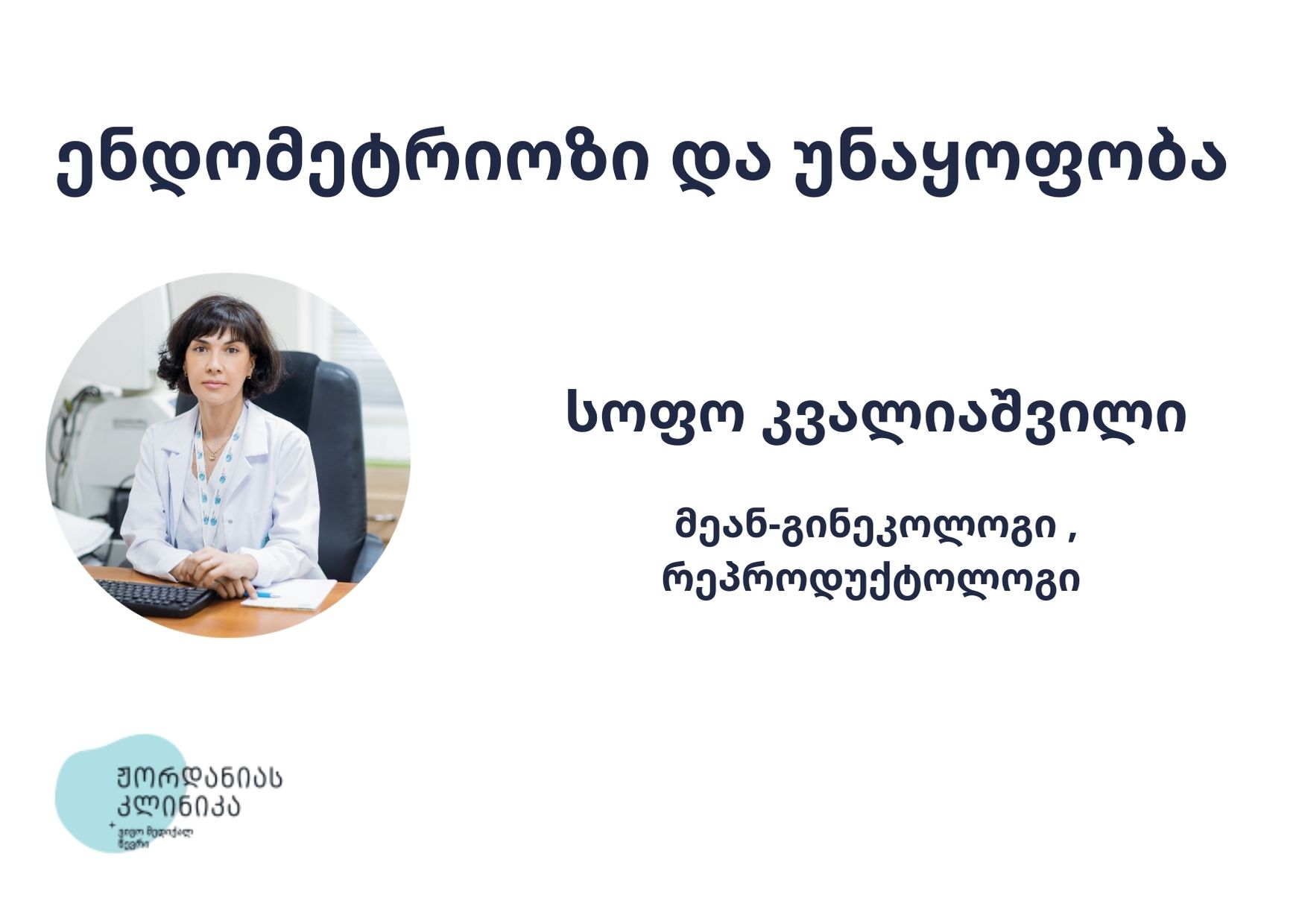Endometriosis and infertility – treatment at the Jordanian clinic
Rating:
Publication date: 25.01.2021
185

Endometriosis is a complex gynecological disease, which occurs mainly in women of reproductive age, in some cases it is asymptomatic, but very often it has a significant impact on the mental state of a woman, the quality of her work capacity.
The prevalence of endometriosis in the female population is generally 5-10%. In 50% of cases, it is a progressive disease. In women, endometriosis is diagnosed with pelvic pain syndrome in more than 33% of cases.
Endometriosis is one of the important factors causing infertility.
In case of female infertility, it is diagnosed in 30-50% of cases
Symptoms and clinical signs of the disease are non-specific. Biochemical markers in blood serum are not characterized by high diagnostic value.
Clinical manifestations of endometriosis are pain in the projection area of the small pelvis, painful menstruation, infertility, dysuria, cyclical pararectal bleeding, constant fatigue.
Symptoms of pain are often non-specific, which determines the probability of delaying the diagnosis (sometimes) even by 12 years, in 20-50% of cases there are no symptoms.
Diagnostic and review laparoscopy is the gold standard of diagnosis
Endometriosis and infertility
Endometriosis is one of the leading factors causing infertility. Development of infertility is related to many factors.
1. Change in egg quality 2. Violation of embryogenesis 3. Change in endometrial reception 4. Development of inflammatory changes
In case of ovarian endometriosis, the follicular reserve of the ovary is reduced.
Depending on the spread and severity of the disease, mild, medium and severe forms of endometriosis are distinguished
Treatment of infertility
Medical treatment is recommended for the treatment of painful endometriosis, but not for women who want to become pregnant, since the drugs suppress ovulation.
In mild and moderate endometriosis, it is possible to offer diagnostic and therapeutic laparoscopy with excision-ablation of endometrial heterotopias, adhesiolysis.
Patients diagnosed with mild endometriosis also get pregnant spontaneously, although the frequency of spontaneous pregnancy in this group of women is lower, compared to women diagnosed with infertility of unknown etiology. The probability of getting pregnant every month is 5-10%, in contrast to the healthy population, where the chance of pregnancy in each menstrual cycle is 25% of the time!
A wait-and-see strategy for 2 years is the management strategy for these patients if they are less than 35 years of age and there are no other co-occurring infertility factors.
Treatment tactics should be selected individually for each patient (couple). Patients should be informed in detail about the risks and benefits of surgical treatment, as well as the availability of assisted reproductive technologies (in vitro fertilization). The possible use of egg cryopreservation as one of the alternative methods should also be considered.
Induction of ovulation (superovulation)
In women with mild and moderate endometriosis and infertility, ovarian stimulation with meticamentos – ovulation induction and using intrauterine insemination – increases the chance of pregnancy to some extent. The success of insemination depends on both the age of the woman and the method of stimulation. This indicator ranges from 10-15% in women under the age of 40!
In women with mild to moderate endometriosis who have not become pregnant for 2 years or more, it is recommended to offer in vitro fertilization.
Management of moderate to severe endometriosis
These patients have a significant healing process in the pelvic cavity.
The probability of getting pregnant every month in these patients is 3%!
There is no evidence that surgical treatment increases the risk of injury
In the case of ovarian endometriosis, there is a risk of reducing the ovarian reserve during surgical treatment.
There are not enough randomized studies about which method of treatment is preferred. Surgical treatment will be tried later or in vitro fertilization – intracytoplasmic sperm injection. Until now, the opinion of clinicians is divided into 2 groups. It should be considered.
In both cases, surgical treatment and non-surgical in vitro fertilization risk benefits (possible complications)
Jordan Clinic
Digomi: Chachava 1/Ljubljana 5
Tel: 2 99 08 53



